Technically, human habitation habits have come a long way since the Neanderthals picked out the first caves to live in. Now we have estate agents to help with the picking. However one thing hasn’t changed, and that’s the human impulse to group together.
These days our cities are mega. If a city has more than 10 million inhabitants, we call it a megacity. The most populous in the world is Shanghai with 18.3 million, Istanbul with 14 million, Karachi with 13 million. The list goes
on. According to consultancy Frost and Sullivan, by 2023 there are expected to be 30 megacities worldwide.
But megacities are stupid. They’re not as stupid as a collection of mud-huts, but there’s a lot of untapped potential, says Lean Doody, smart cities lead at engineering consultancy Arup. Or to put it another way, they could be a lot smarter.
“A smart city is one which uses technology to solve its problems,” says Doody. “We already depend on technology to run our cities – the traffic, the energy grid, water, waste. But we’re so used to these things we don’t even realise we’re using it. The potential is in thinking about how we might use that technology to improve them.”
“Smart cities” has been a buzzword for marketeers at engineering and technology firms for a while now. IT firm IBM is a particularly keen voice amongst the crowd. The cynic would say that along with big data, the cloud, machine to machine communication, the internet of things, it’s no coincidence that the next big technology trend just happens to be what they are selling.
And to the victor the spoils. Estimates from experts of the smart city market’s value in the future vary wildly, but are always in terms of hundreds of billion of dollars. An estimate put together by Arup for a UK Government study last year, which aggregates all the other estimates, puts the figure at $408 billion worldwide by 2020, which includes the services to install the technology.
But the idea of the smart city has integrity beyond the marketing. Bigger cities doesn’t necessarily mean better cities. Large-scale urbanisation brings with it problems of resource consumption, environmental impact, climate change and extreme weather resilience, even the need to find new ways of employment for lots of people. Plus, says Doody, there’s the need to make cities nice places to live. Smartphones have raised people’s expectations about data and cities. Citizens can now be told via their phones when their bus or train is late, for example, or plot their way around a large conurbation using an app like
city mapper.
“Transport is where people are investing the most time and money and is where we will probably see gains in the short term. The normal concern for cities is the economy first and transport congestion second,” she says.
The challenges facing cities are the same around the globe. However, that doesn’t mean that the same technology and tactics can be used in different places. Doody says: “There’s different approaches being taken around the world. In the new cities being built in China and India, you can build from the ground up with intelligent infrastructure. In Europe and the West, you have the challenge of adapting existing cities, which requires a different approach. Even then, different societies and cultures require a different approach.”
Of course, not all cities are equal, and different governments are smartening up their cities at different rates. Where then are the smartest cities and just what makes them so clever? Below is a list of some of the smartest cities in the world.
Based primarily on last year’s Arup study, we’ve then taken into consideration the plethora of resources available online for this subject, including:
IBM’s Smarter Cities Challenge, the
Innovation Cities Program Index, research from the
Intelligent Communities Forum, and the
Siemens Green City Index.
If there are any cities you think deserve to be in the list or shouldn’t be included, let us know in the comments at the end of the article.
Chicago
Since Mayor Emanuel was elected in 2011, Chicago has benefited from strong leadership and last year the creation of a clear and comprehensive
technology strategy. Quick wins instigated by his office include the spreading of fast broadband in underserved parts of the city and free wifi, but the administration has won the most plaudits for its “city as a platform” approach. This makes the vast amount of data the local government collects publicly available in
one place and easier for people to work with and make products and services out of. The approach aims to encourage innovation and can directly impact quality of life for a city’s citizens, has subsequently been adopted elsewhere.
Rio de Janeiro 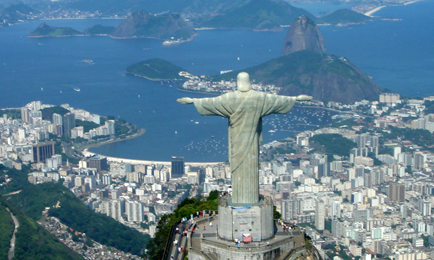
This year’s world cup and 2016’s Olympics have caused a wave of investment in infrastructure in Rio, which, although not always to the liking of its inhabitants, has nevertheless given the opportunity for the government to install technologies from the ground up. The highlight, which receives a lot of publicity, is the city’s
centre of operations. The centre, which was set up by IBM, integrates data and personnel from 30 different city departments, including police, transport and electricity, allowing them to respond to events and crises in a more responsive and coordinated fashion. The centre was initially set up for natural disaster response, but is being used to deal with many types of events as well as day-to-day operations.
Stockholm 
Stockholm won the intelligent community of the year award in 2009 and was appointed European Green Capital by the European Commission in 2010. The city is credited as taking a “citizen-centric” approach to smart city investment. In 2007, Stockholm’s city council invested €69m (£60m) to develop government e-services. However, the city’s investment in communications infrastructure goes back to the 1990’s when Stockholm was one of the first cities to install a city-wide fibre optic network. More recently it was the first city in the world to roll out the 4G mobile network. The city also hosts the Kista Science City, where several large technology companies reside. It also has an extensive transport network.
London 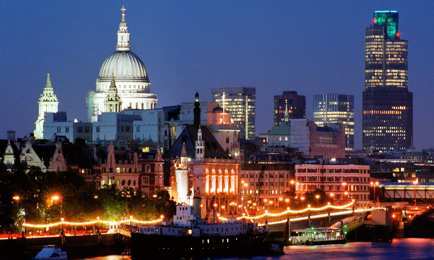
The congestion charge, the oyster card ticket system, wifi on the underground and Boris Bikes, are all examples of smart transport solutions to be found in London. A smart parking service, which uses sensors in car parking spaces and map data to show availability is being trialled in Westminster.
The city’s transport authority Transport For London, is using its data to make products and services for smartphones that make it easier to navigate and use. London’s government is also extending a similar tactic to help create apps in other areas, such as leisure, health and environment. The city has created a “Smart London” board to investigate how to best use technology to improve the city.
Boston 
Boston Mayor’s Office of New Urban Mechanics has been tasked with overseeing the introduction of smart city type solutions in the cities of Boston and Philadelphia. Its focus has been on transport, but the Office’s open approach is leading to some innovative projects. These vary from a project where people adopt a fire hydrant in the city and commit to digging it out in snowy conditions, to “hyper-local” tools such as “citizens connect txt”, where residents can text when there are problems with public services. Boston is also one of several US cities to use a system called “shotspotter”. This consists of a network of acoustic sensors able to detect and pinpoint the location of gunshots, which enables a better response rate and improved analysis of criminal behaviour.
Barcelona 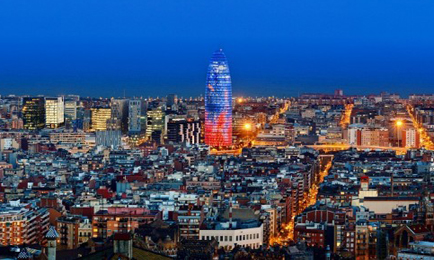
There are many smart city projects in Barcelona which have grown from work funded by the local government in the last decade. These projects are currently being pulled together to form a coherent strategy. They include a plan to change street lighting to LED technology and remotely control their operation, projects in energy, water and transportation, including district heating and cooling solutions, the installation of smart meters in residential areas and the construction of a charging network for electric vehicles. Barcelona also has a program to make data open to the public, and a region of the city, called 22@, designated as a test bed for new smart city technologies.
Hong Kong
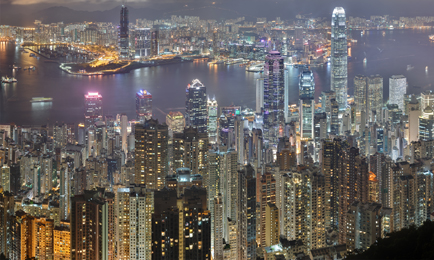
Hong Kong has invested substantial amounts into ICT since the late 1990’s and has a strategy for smart cities encapsulated within its “Digital21 Strategy”. The focus of this strategy is to increase economic activity through ICT and it also aims to create leading e-government services.
Notably, Hong Kong was the first city to introduce contactless card payment on its public transport system. The “Octopus Card” can now be used to pay for many other things in shops, fast-food restaurants, parking and for items in vending machines. Elsewhere the city is pioneering the use of RFID tags in locations such as the baggage handling system at its airport. Smartphone penetration is amongst the highest in the world in Hong Kong.
Singapore 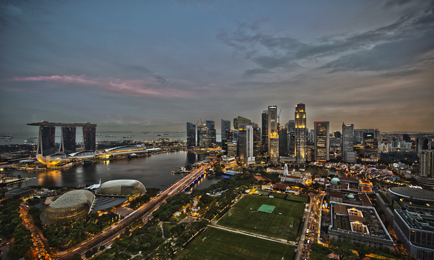
Singapore was the first city in the world to restrict traffic using a congestion charge, a model which has been subsequently copied around the world. Today, a network of cameras, sensors and GPS devices help the authorities track traffic and predict where jams will occur and charge drivers automatically. Disabled and elderly residents have RFID cards which extend crossing times at traffic crossings. It has an advanced water management system that is using increasingly more efficient desalination technology.
The city also has a dedicated Smart Cities Programme Office and is also part of US university MIT’s Senseable Cities Lab to find ways of using the real time data generated in the city.
San Francisco 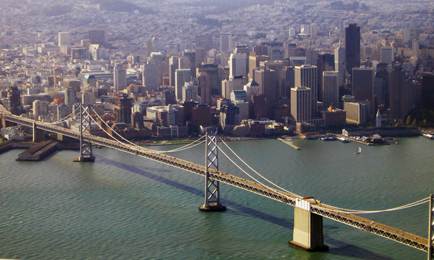
Similarly to Boston’s Office of New Urban Mechanics, San Francisco Mayor’s Office of Civic Innovation presides over smart city projects. However, building on the city’s background of technology and sustainability, the focus of the Office is on entrepreneurialism and clean tech.
The city makes use of technology such as sensors and open data to achieve environmental goals and improve livability in areas such as transport, water, waste and energy. This includes EV charging infrastructure, software and online portals to help buildings save energy, LED street lighting and parking sensor technology to help drivers find empty spaces. The Office of Civic Innovation also runs several initiatives to encourage the city’s inhabitants to devise smart applications of technology at city level, such as roundtables and ideas websites.
Seoul 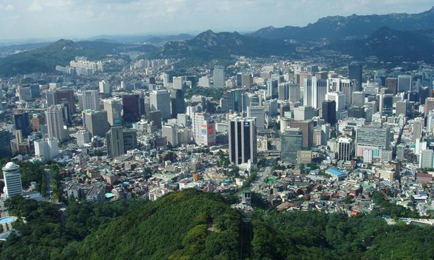
South Korea’s science ministry announced this month that it planned to launch 5G by 2020. After being at the forefront of 4G, 3G and 2G rollouts, Seoul will likely be the testing ground. The city is widely credited as being the most well-connected in the world and featured most of the innovations mentioned in the other cities above.
The government has a strategy, called “Smart Seoul 2015” to ensure its leading reputation remains in place. By 2015 it plans to have a number of advanced smart services in place, including a health care service for the elderly and disabled that provides checkups and medical attention. This is being facilitated by the handout of second hand smart phones and tablet computers to the elderly, disabled and low income families.
A special mention here also to Songdo, South Korea’s smart city
experiment, which lies 40 miles south west of Seoul. The city was built from scratch to be “smart” and features a waste system that sucks rubbish down into a network of tunnels under the city to a recycling centre.